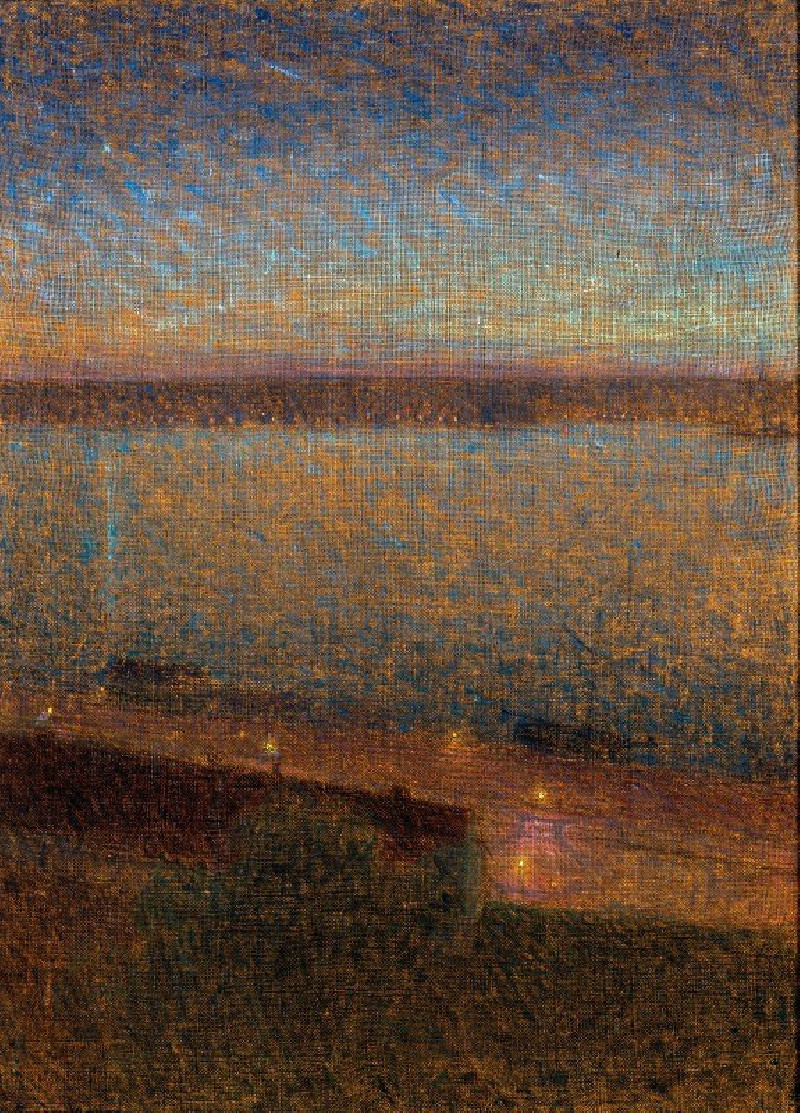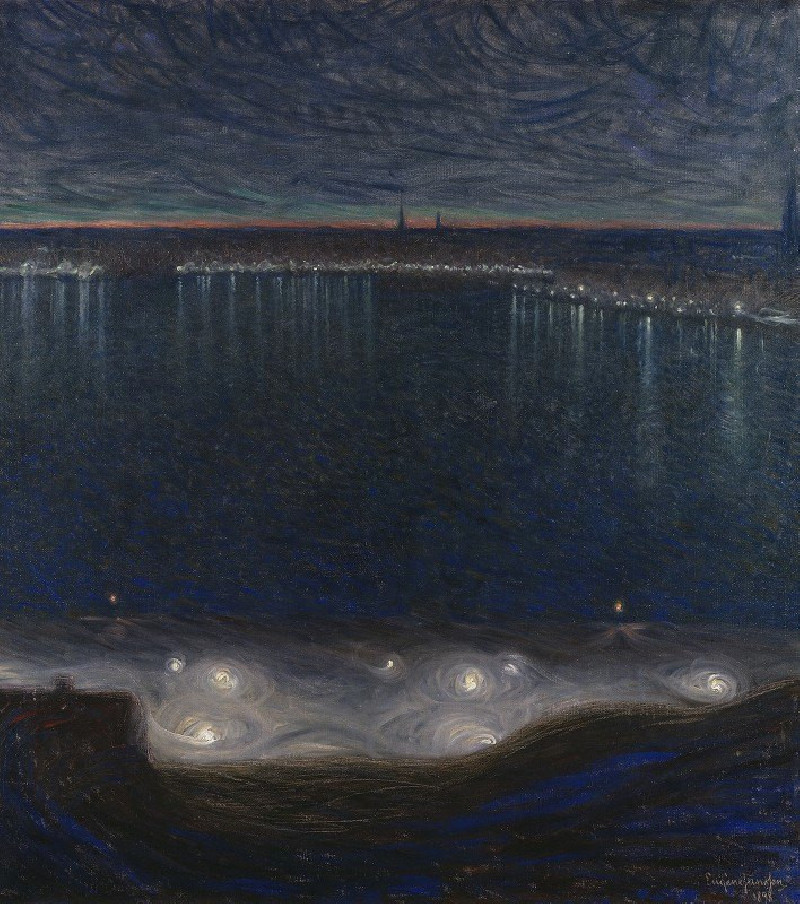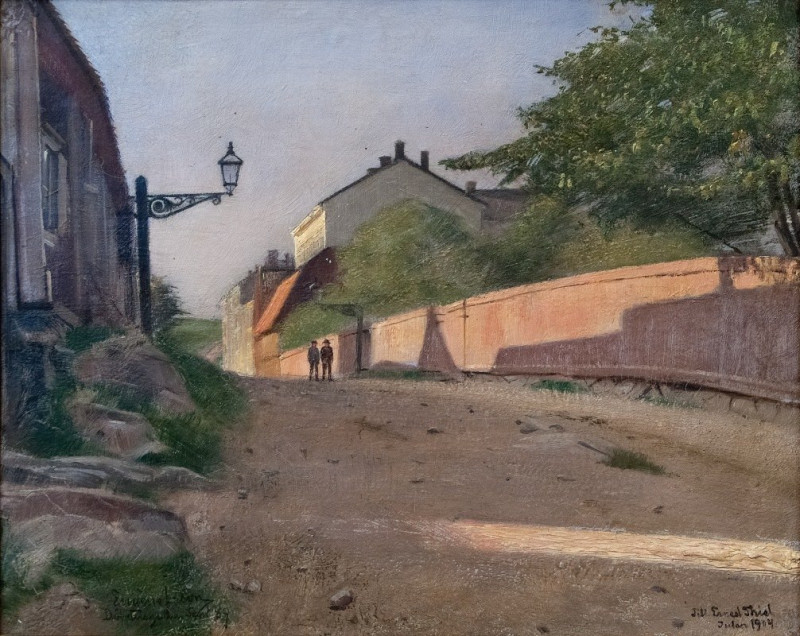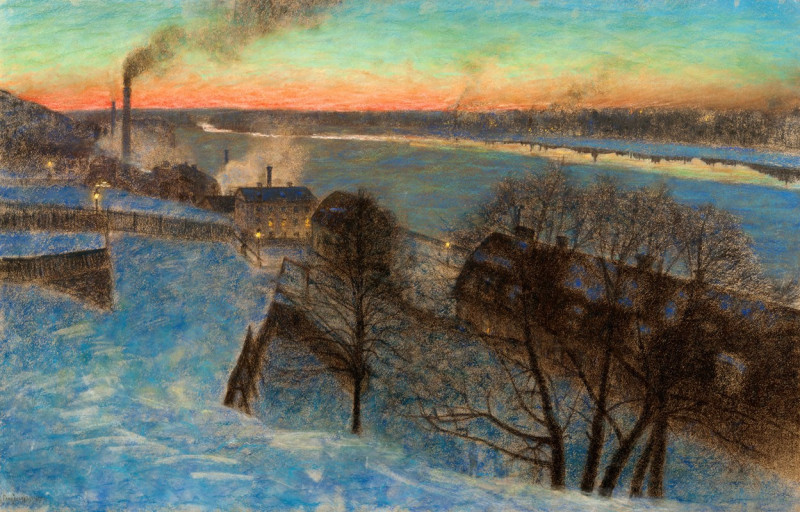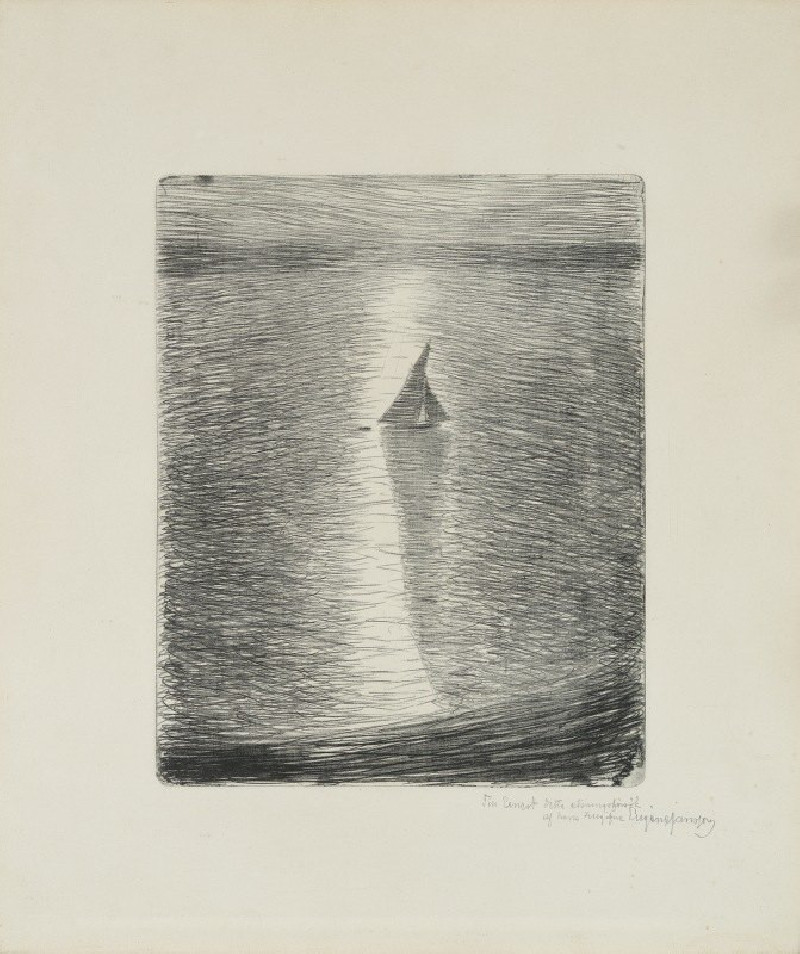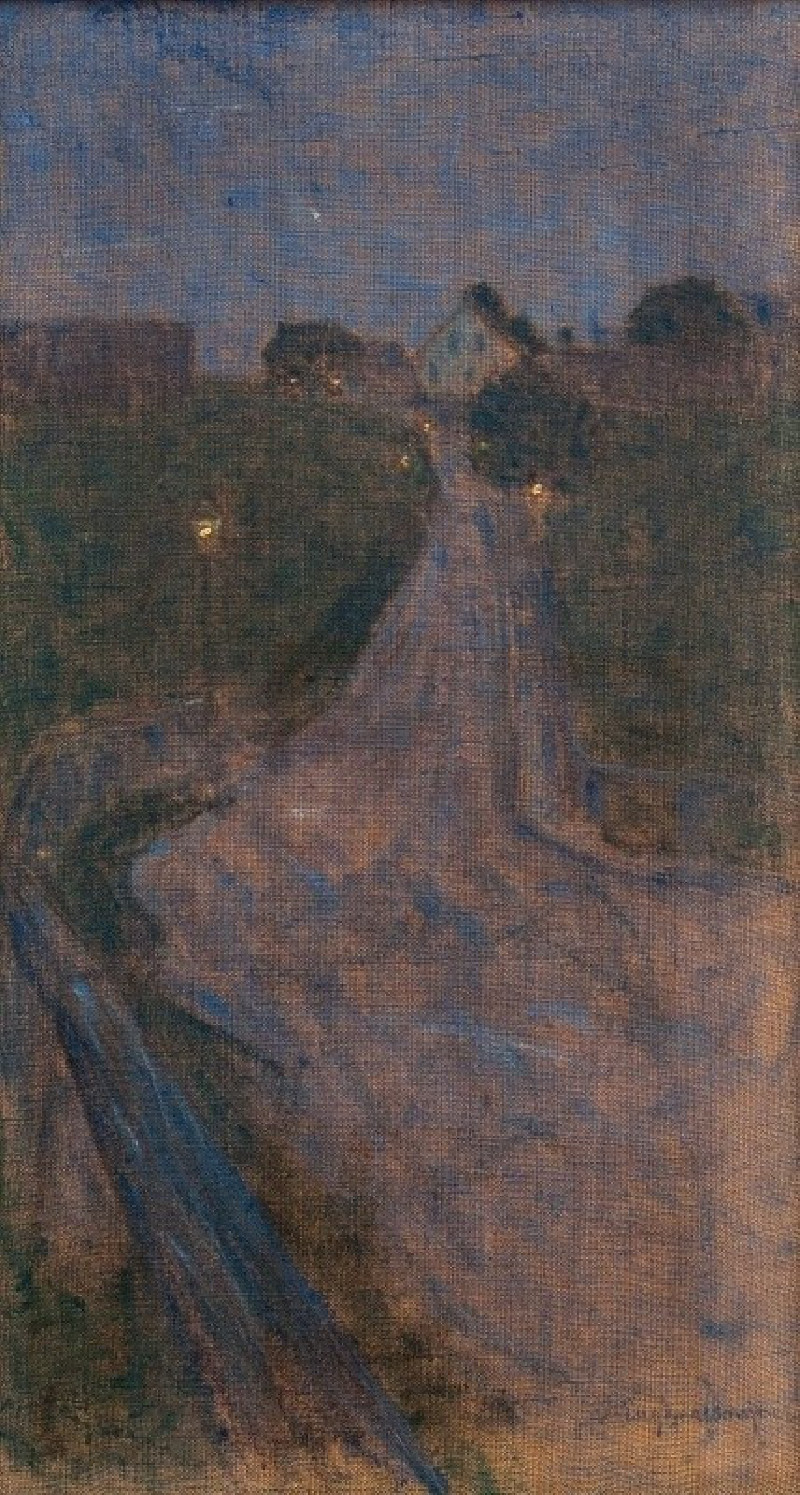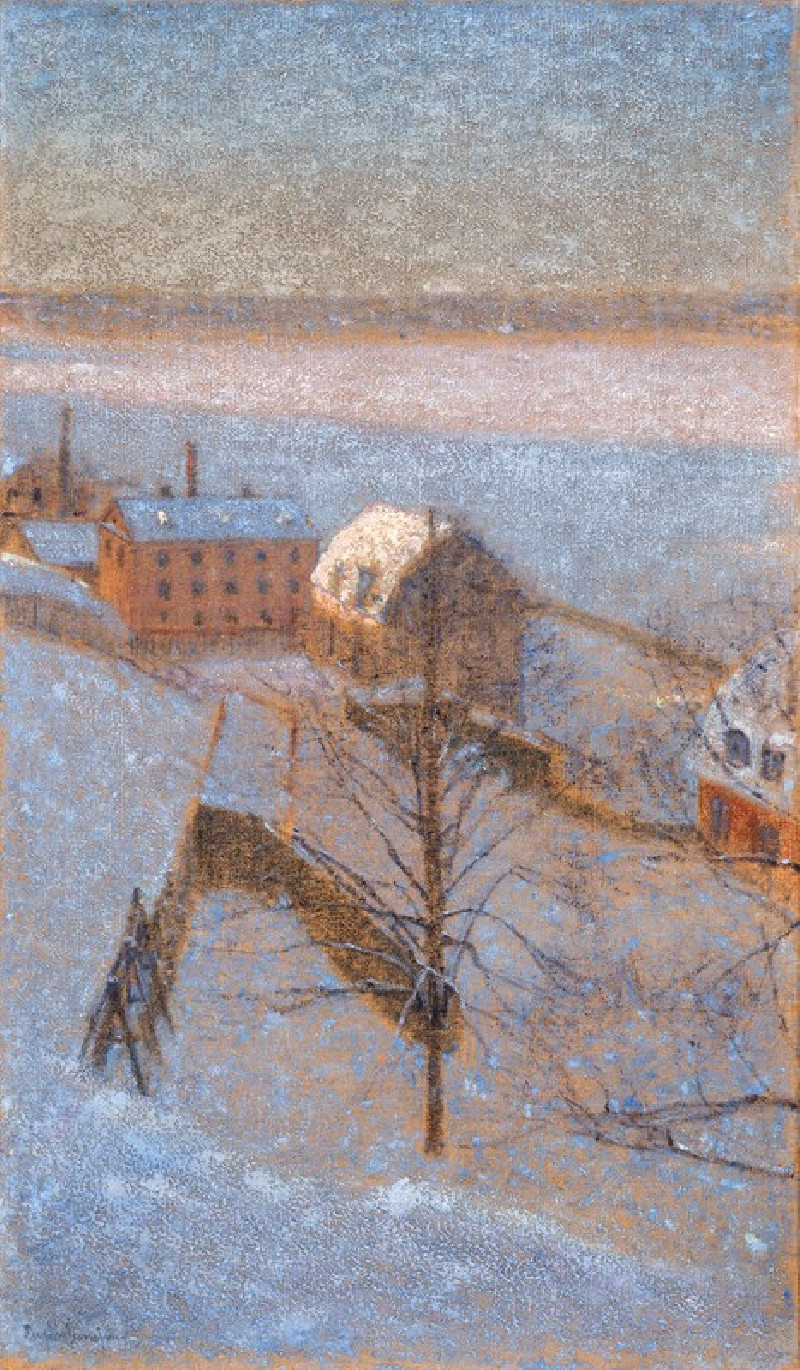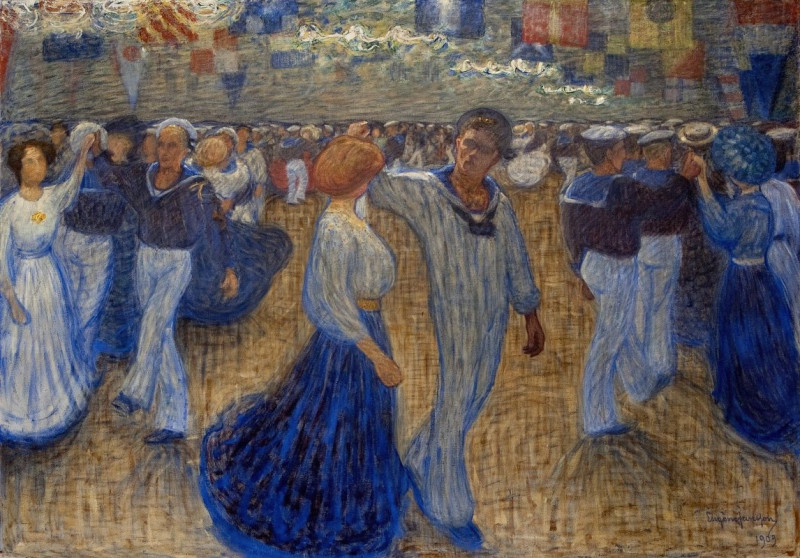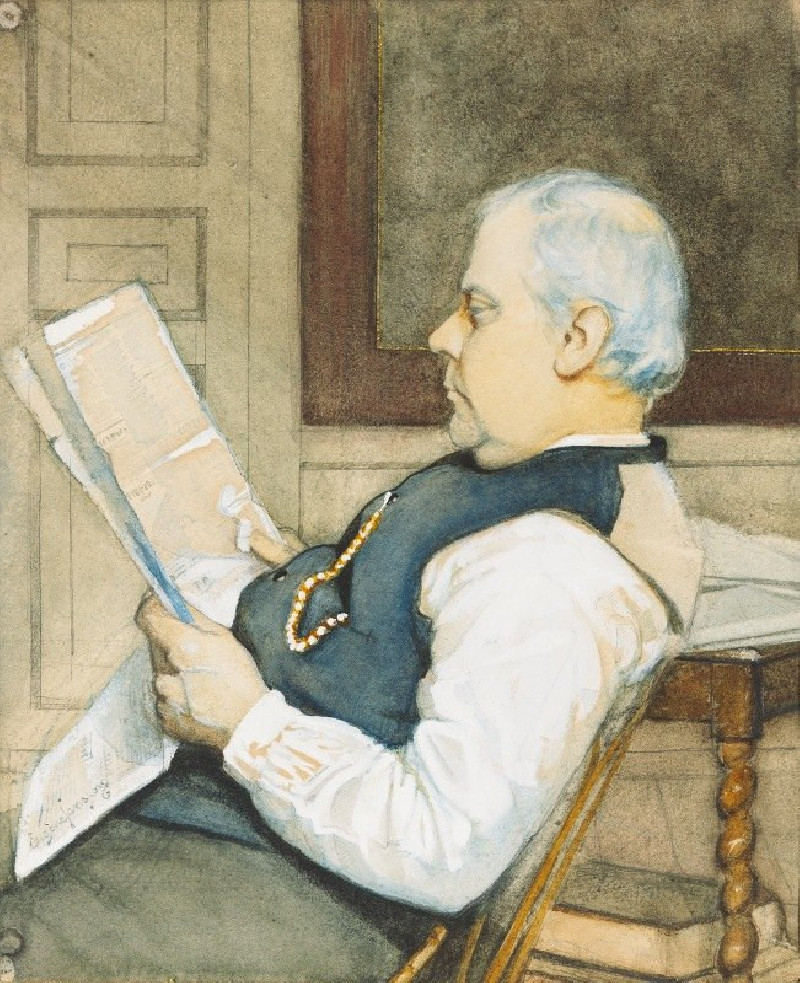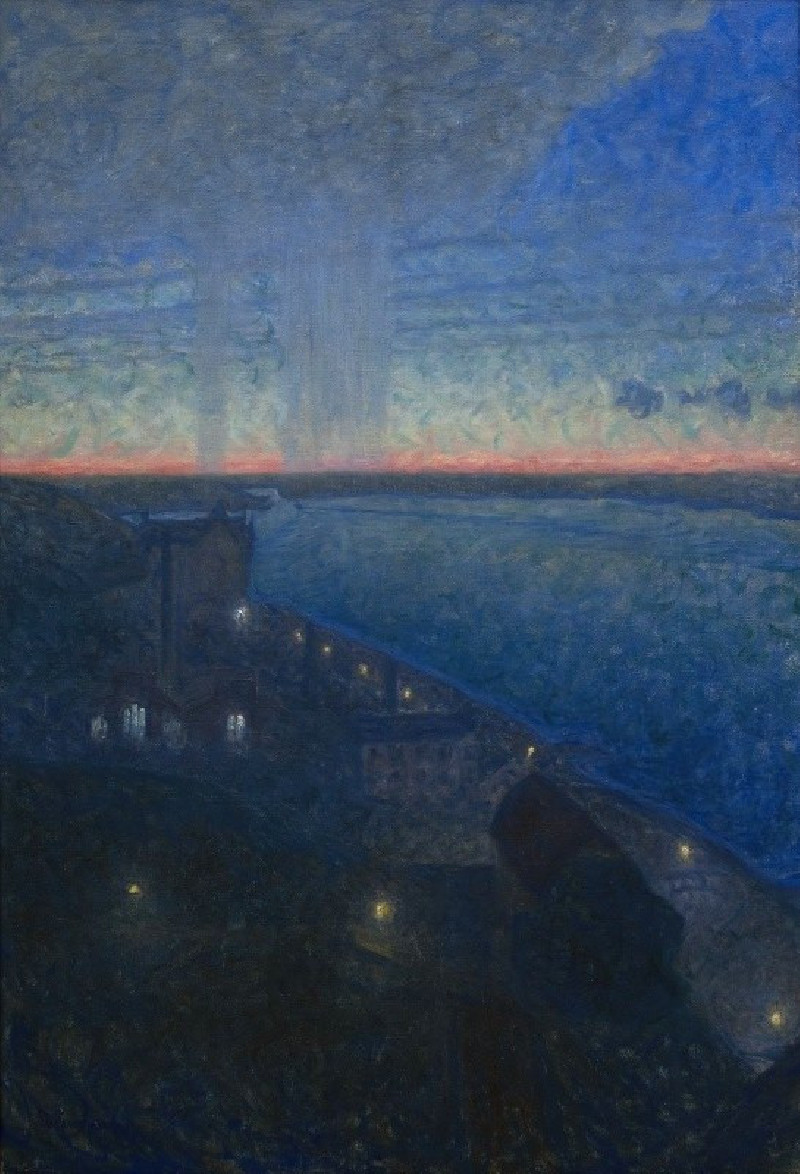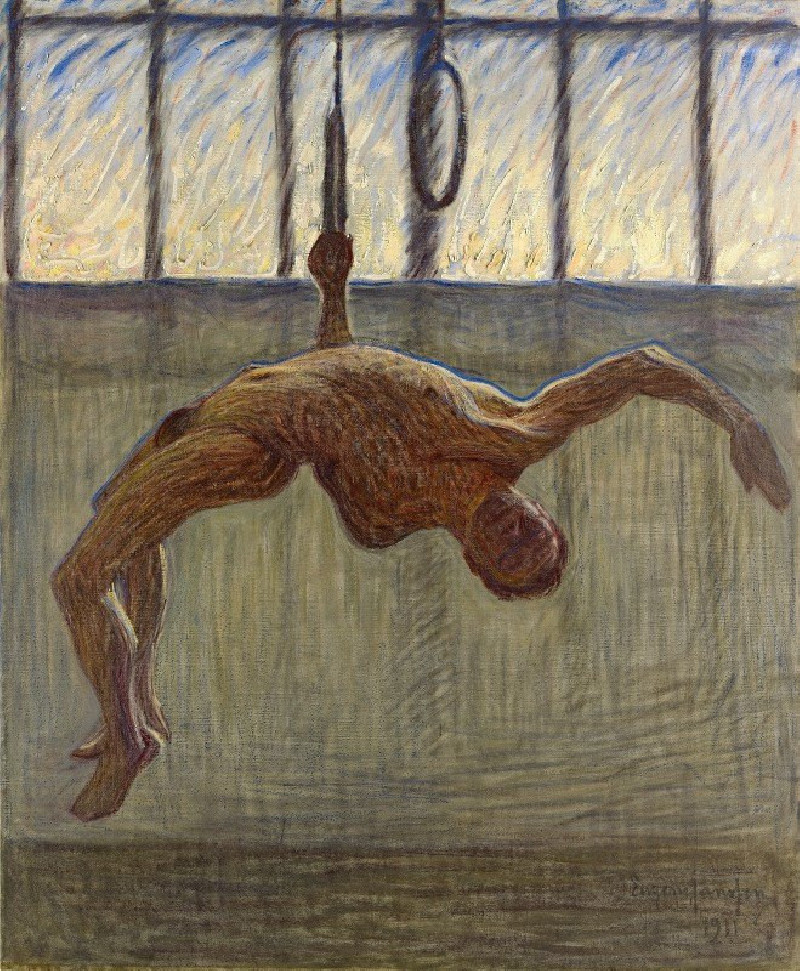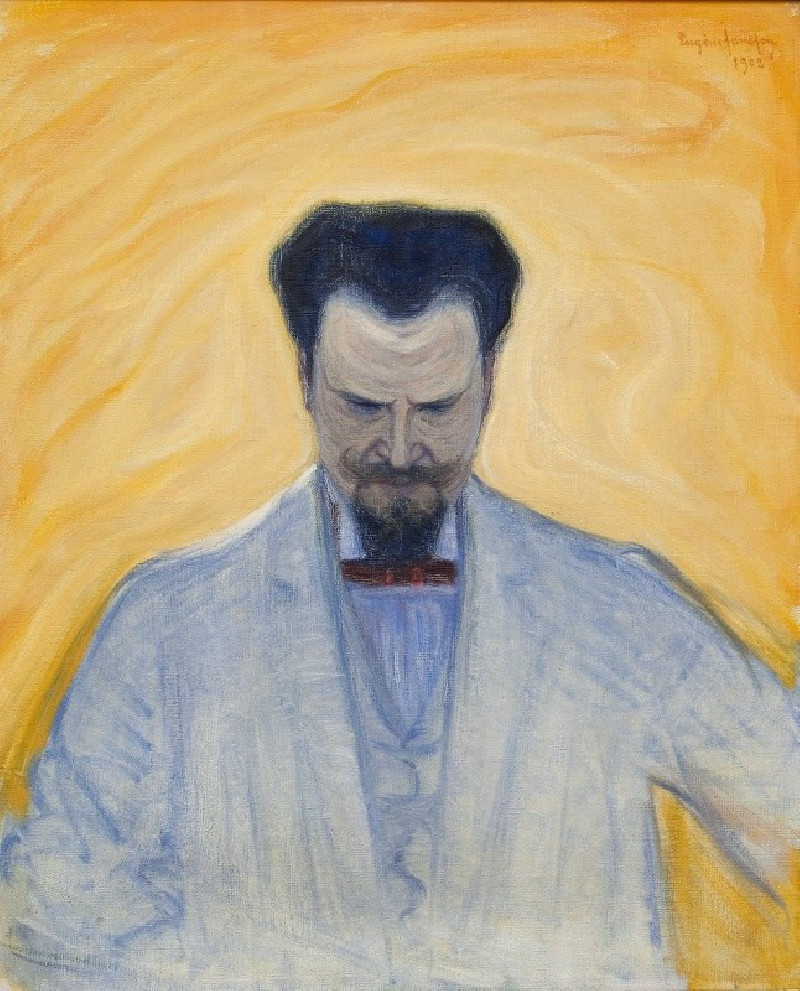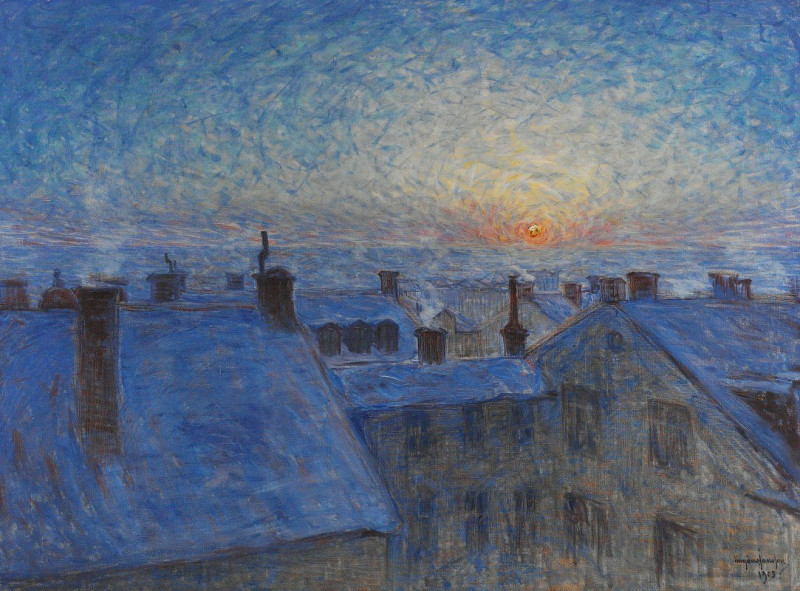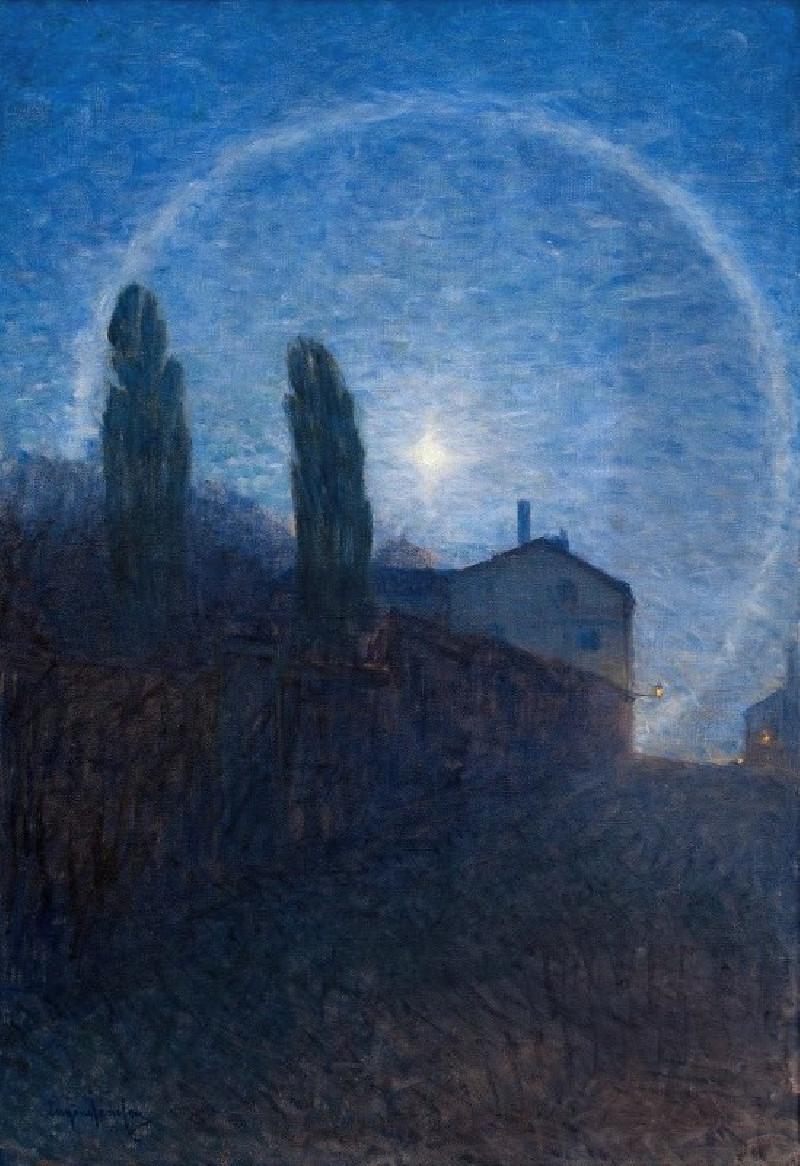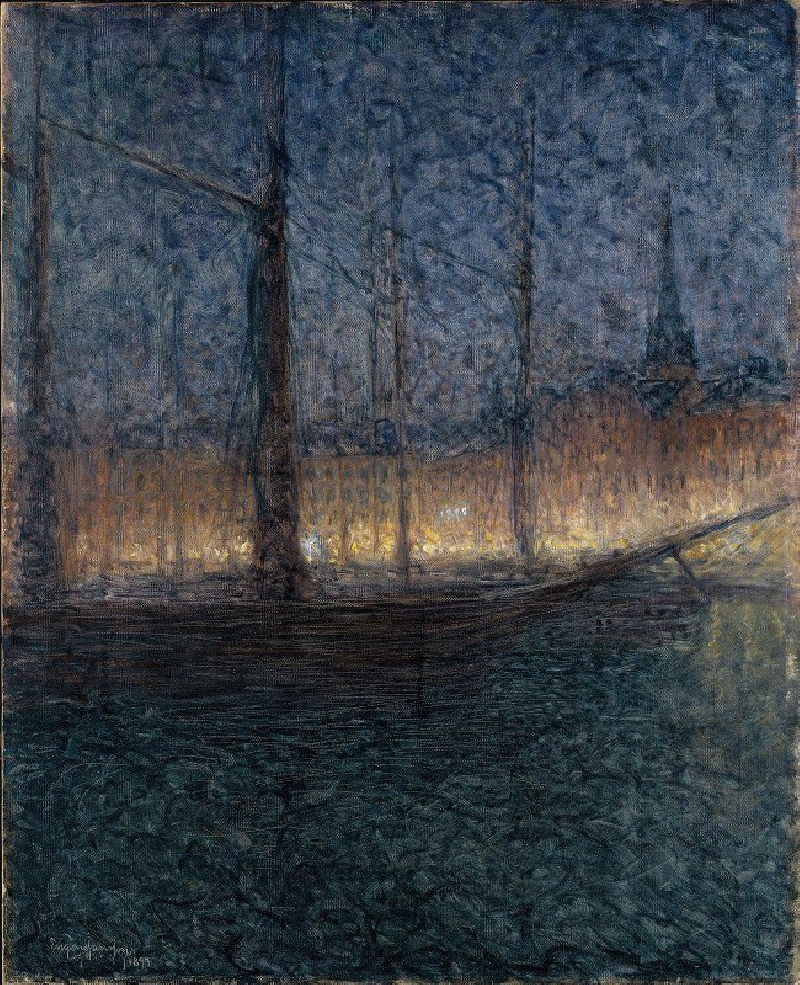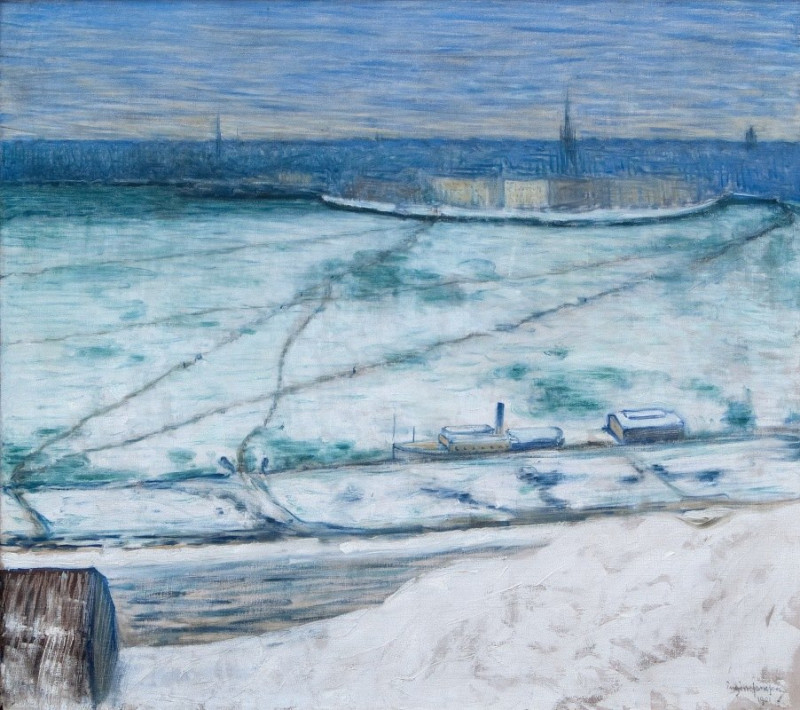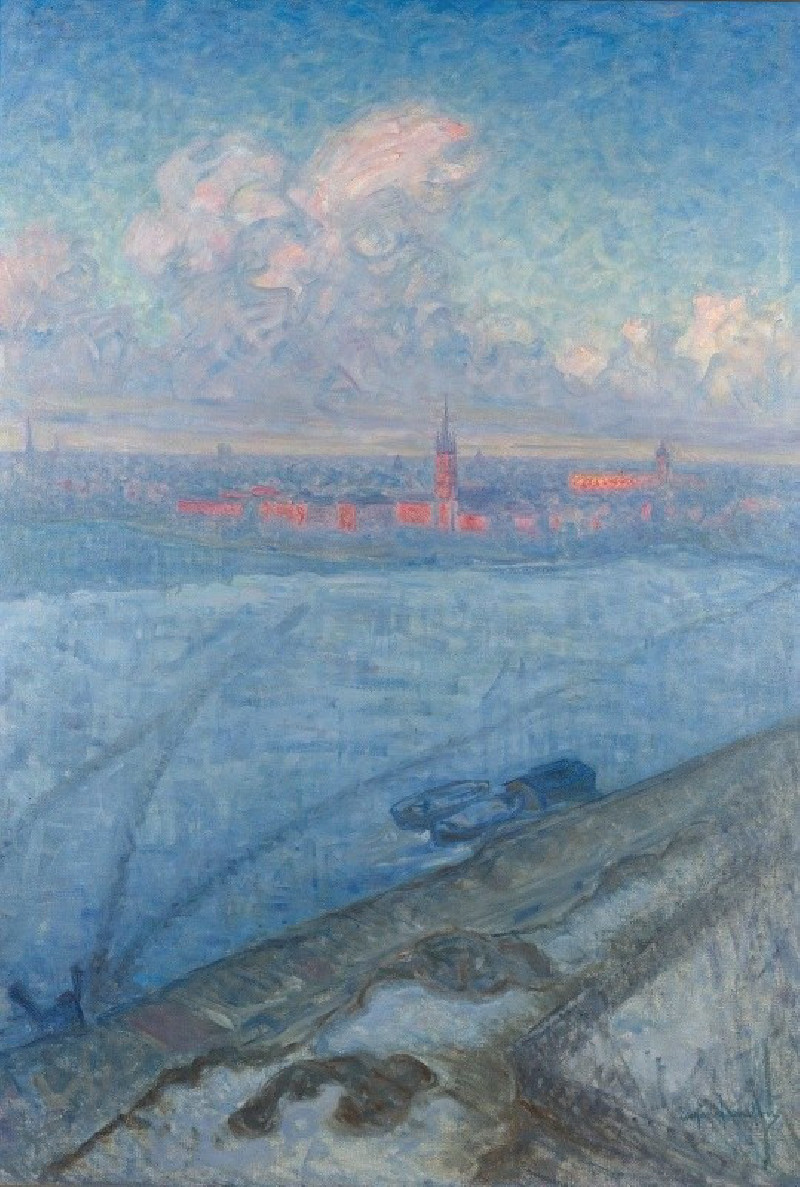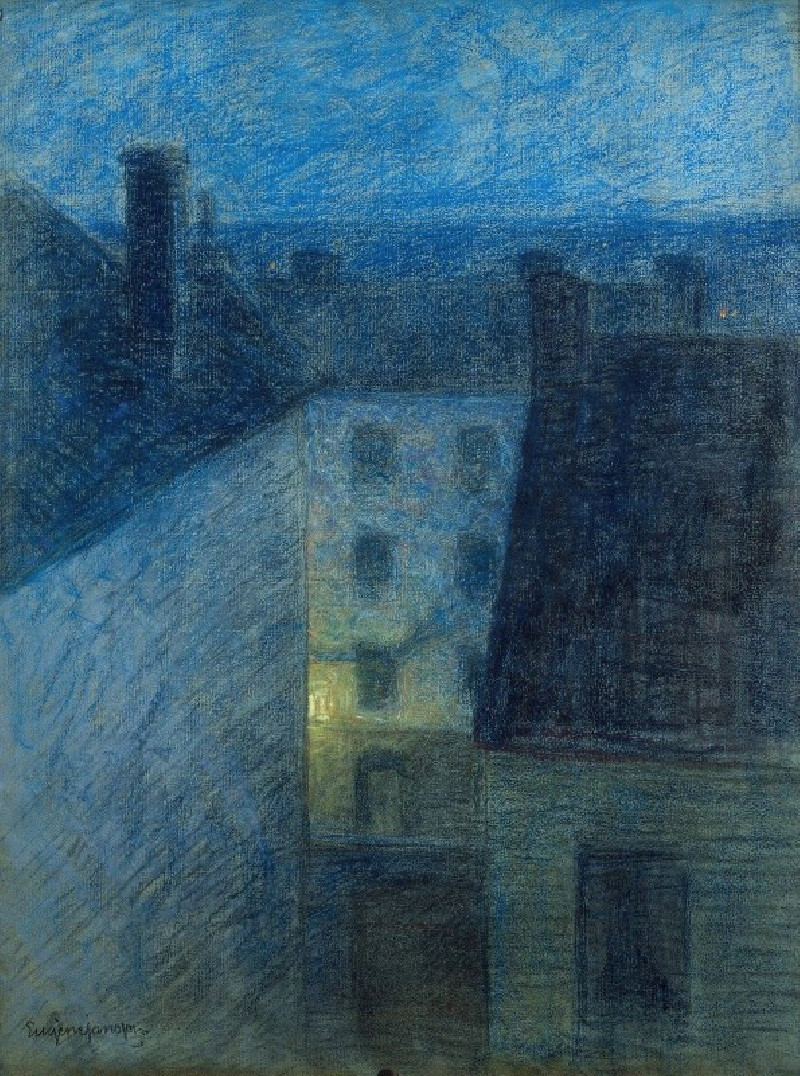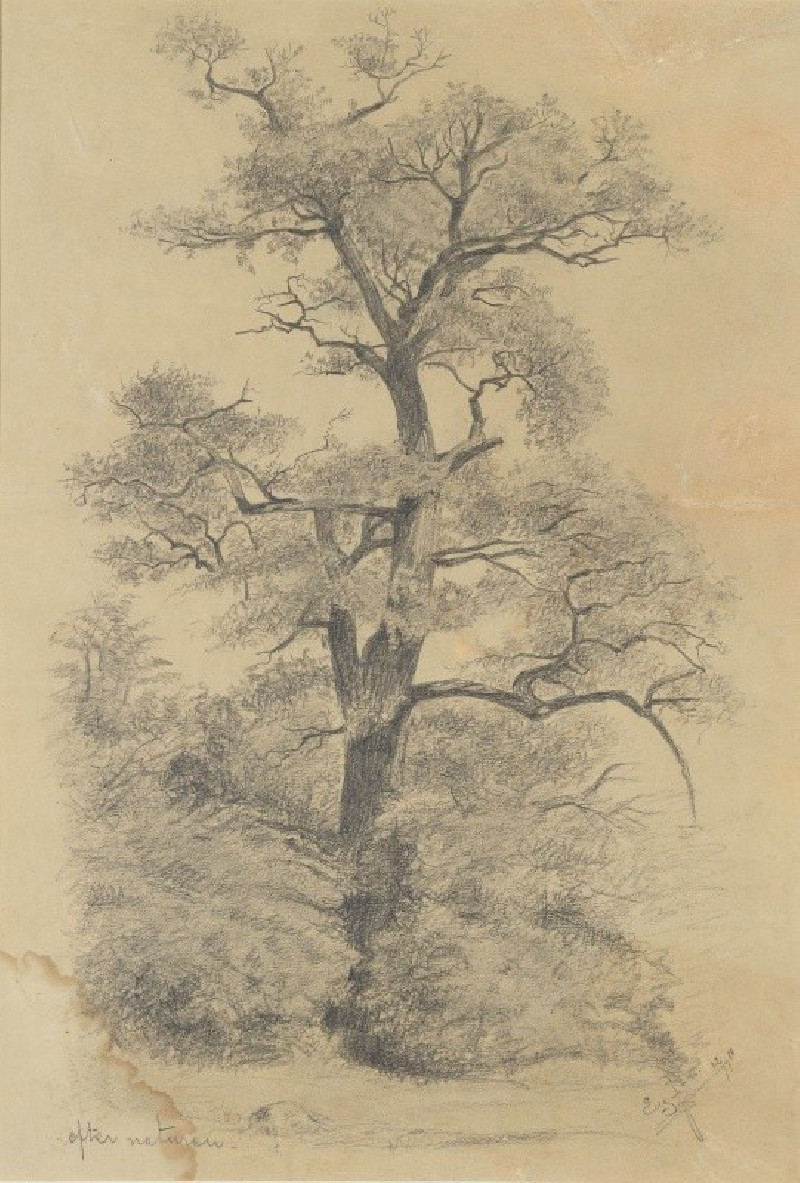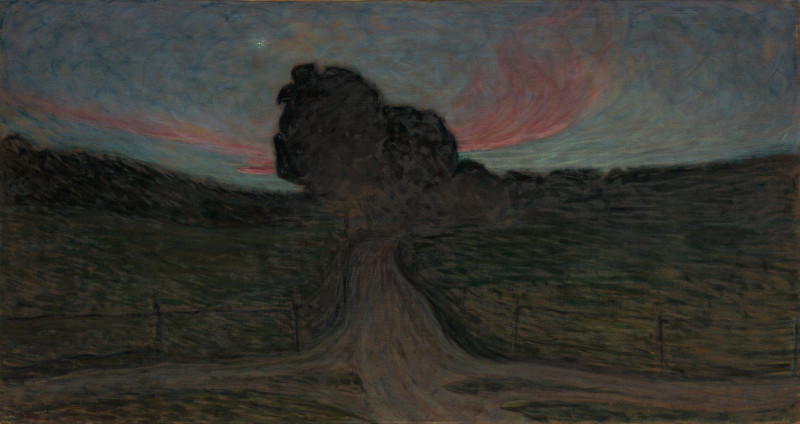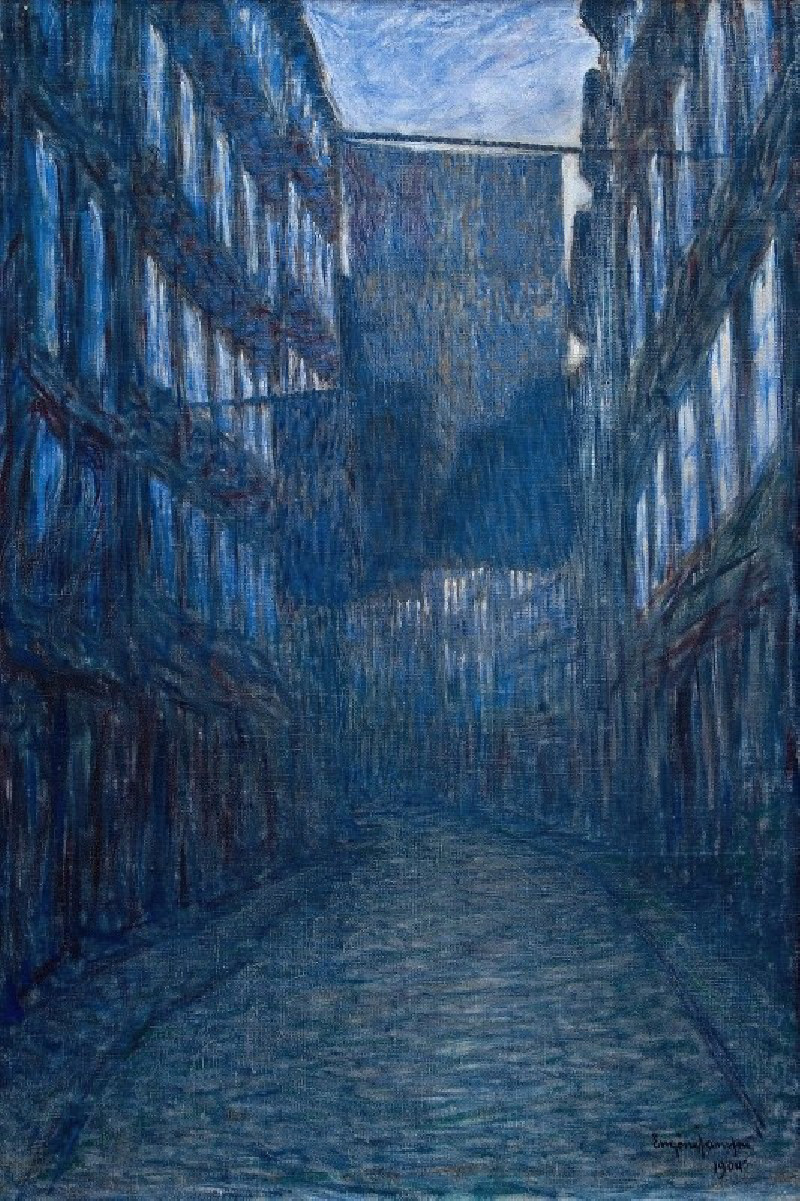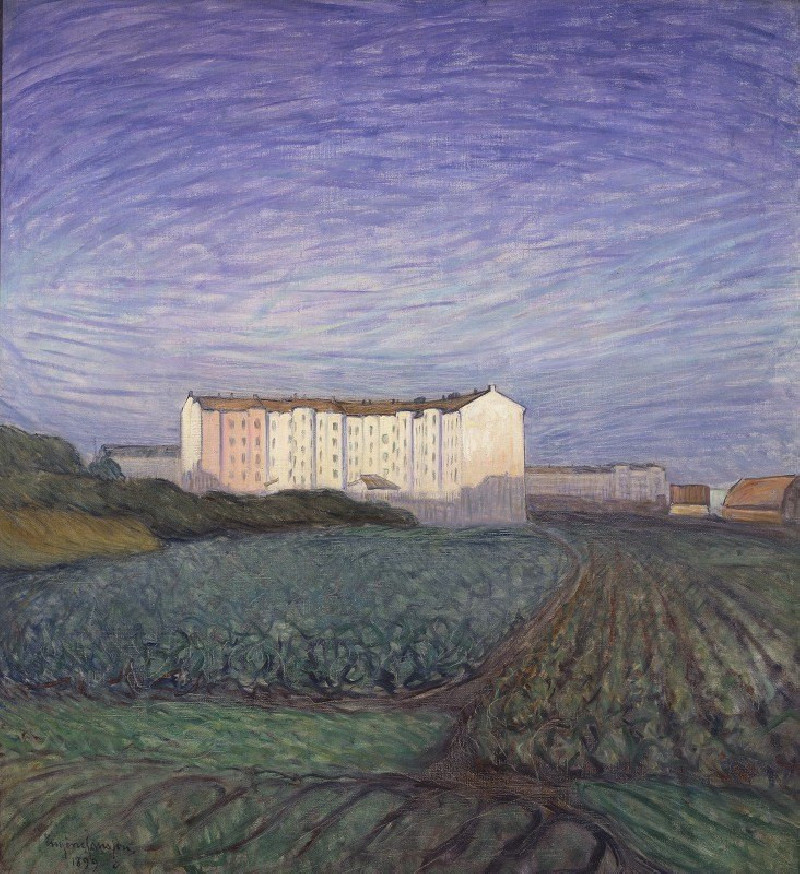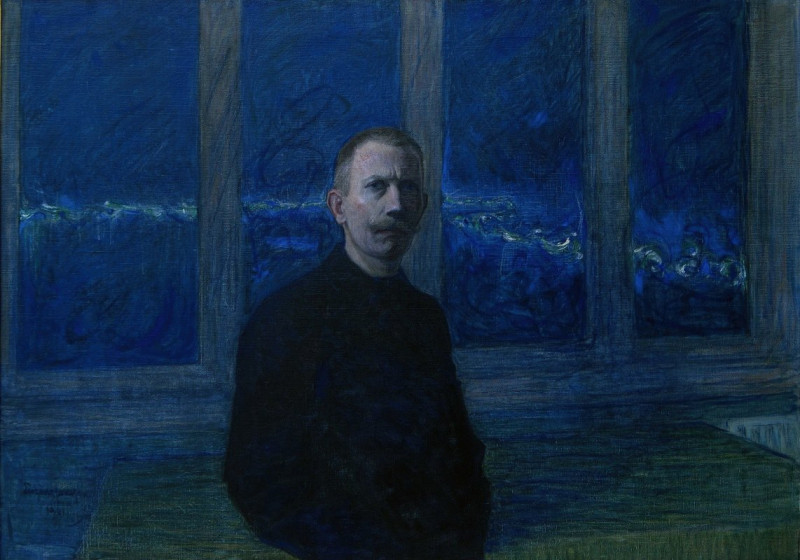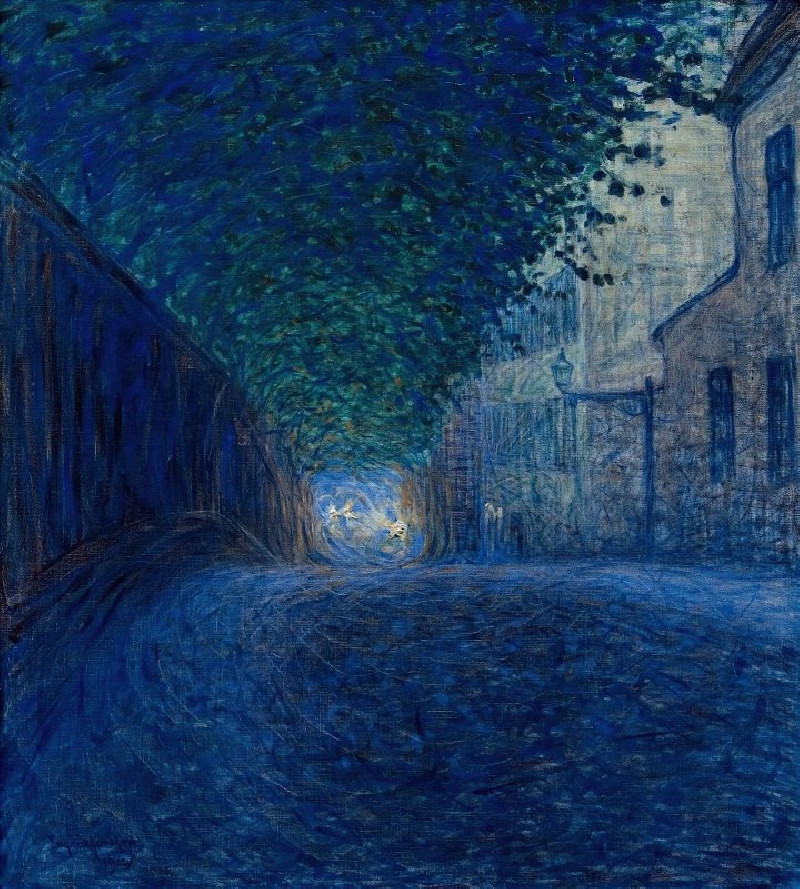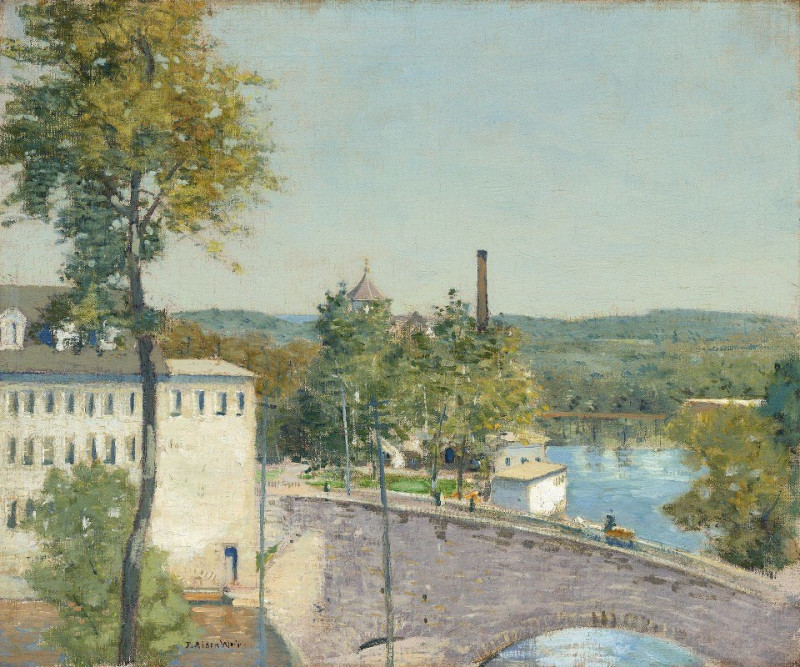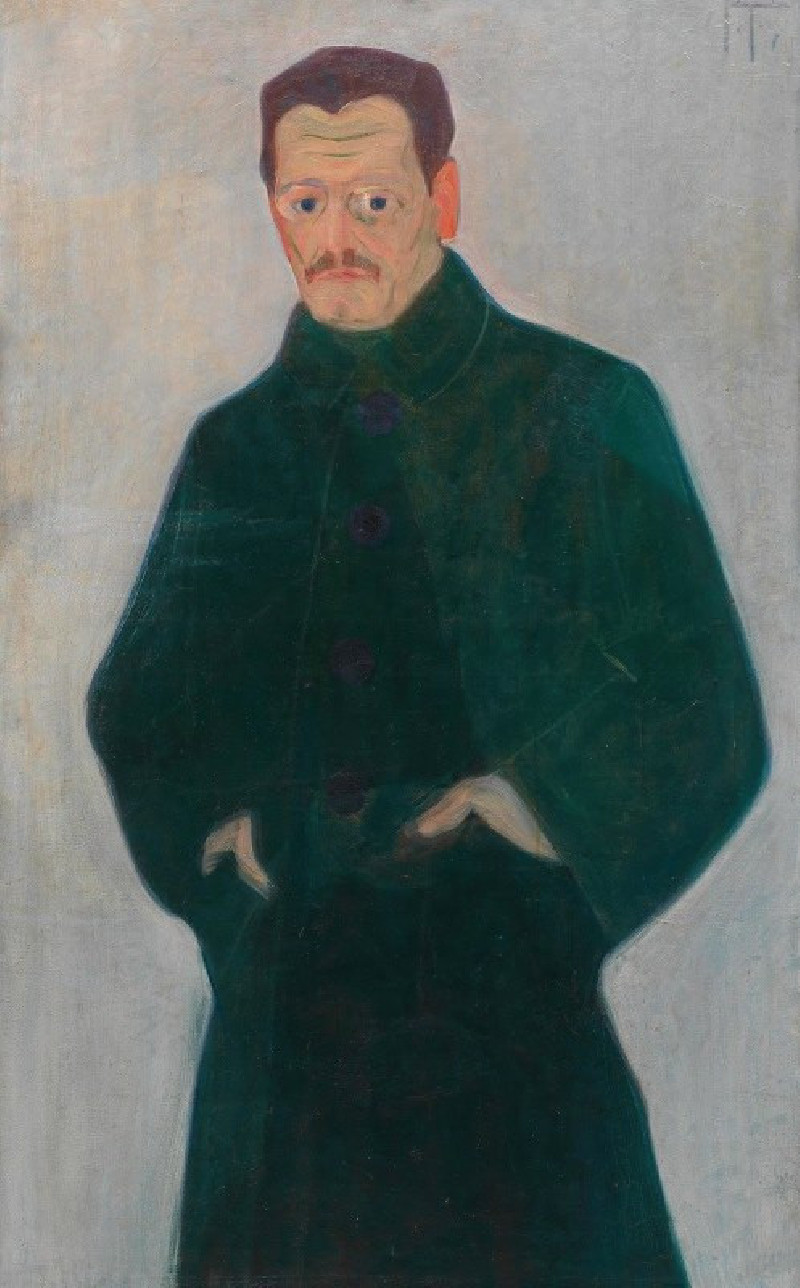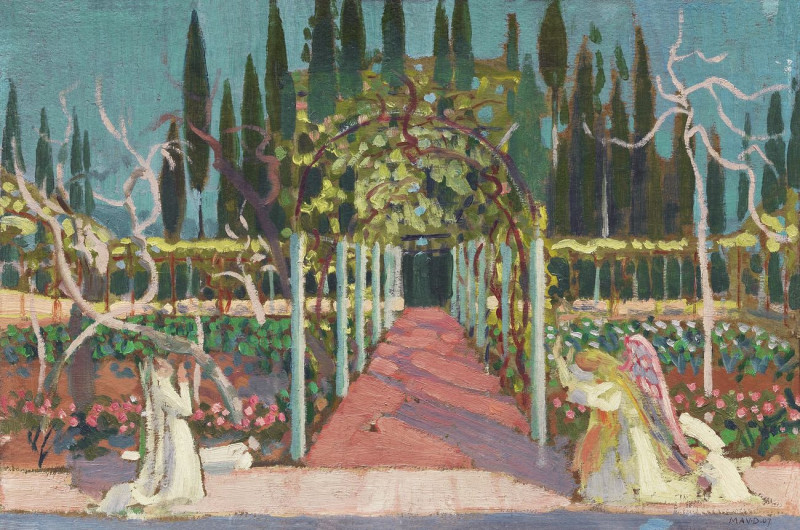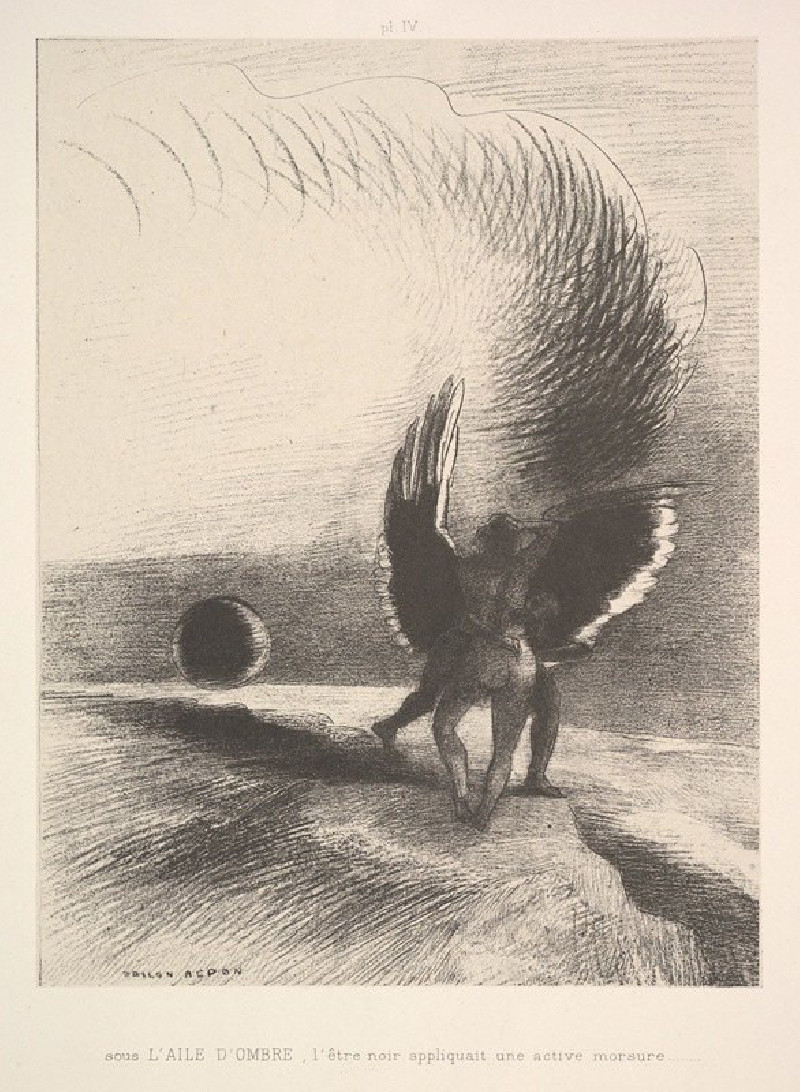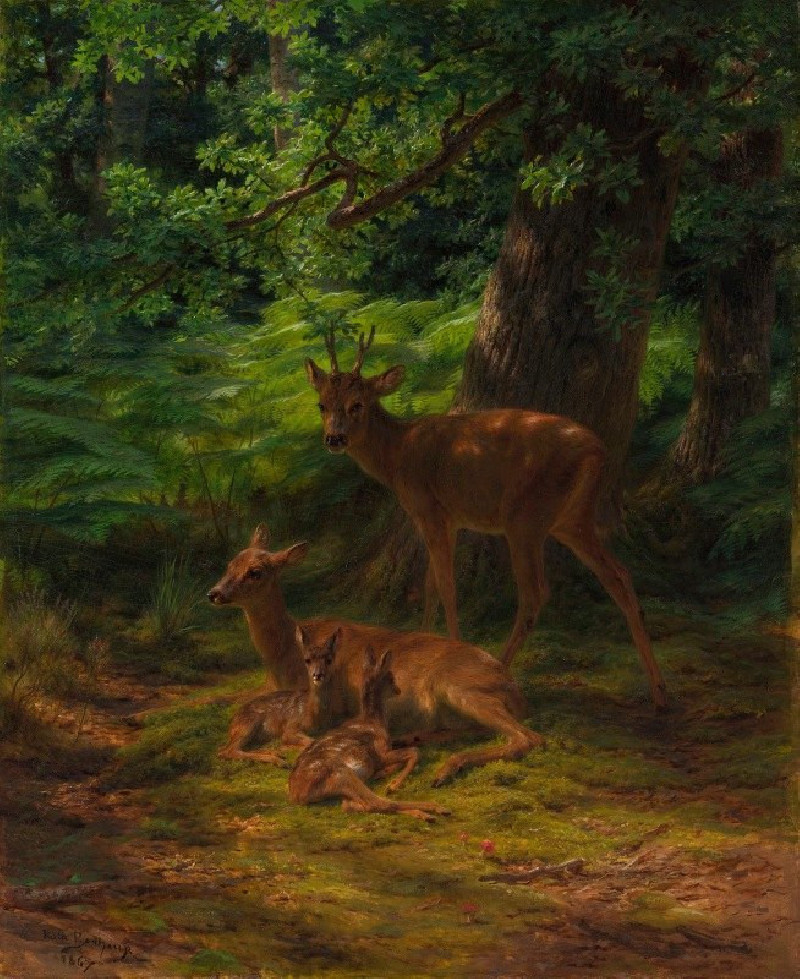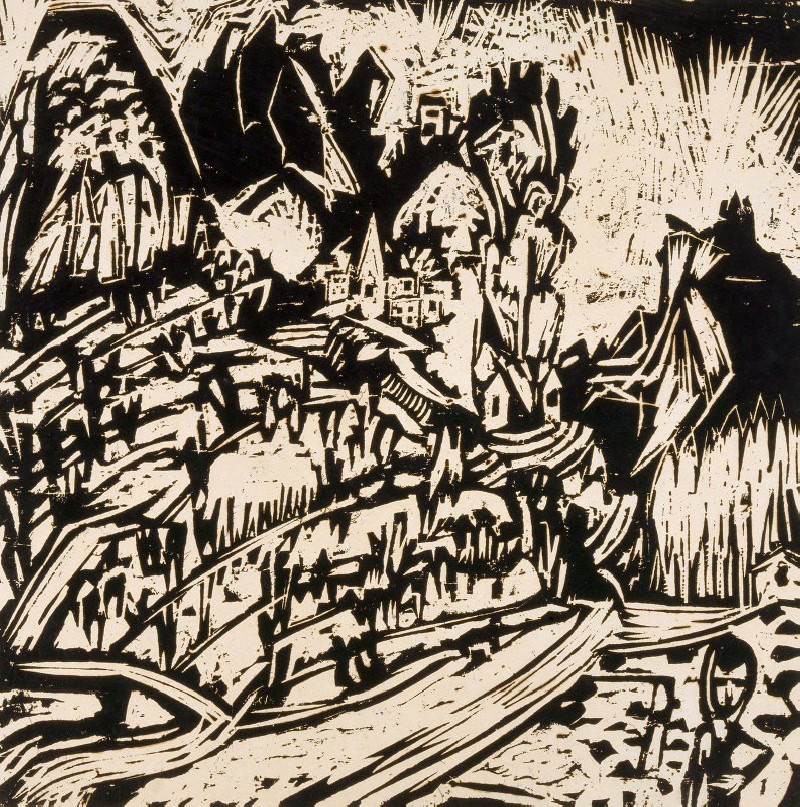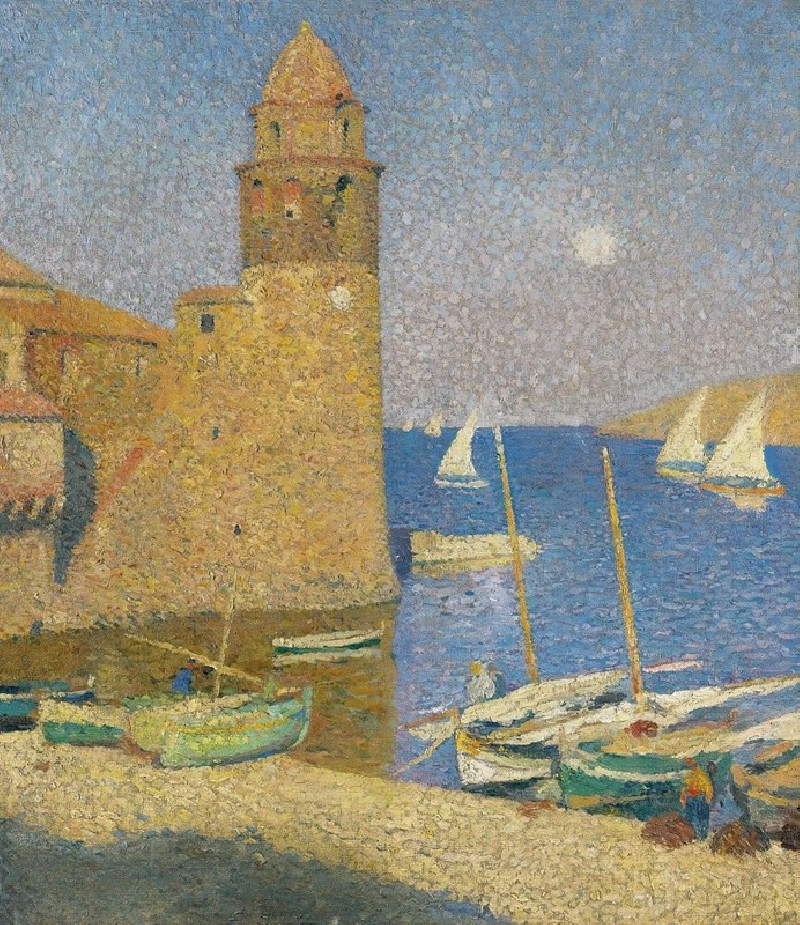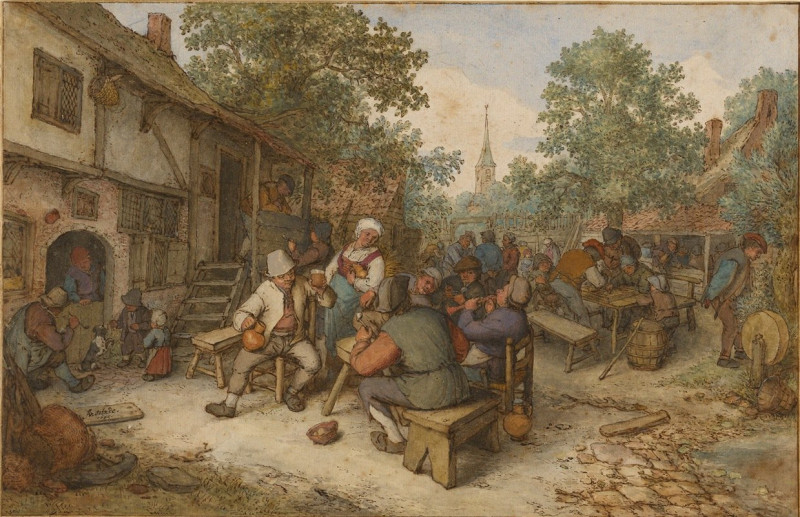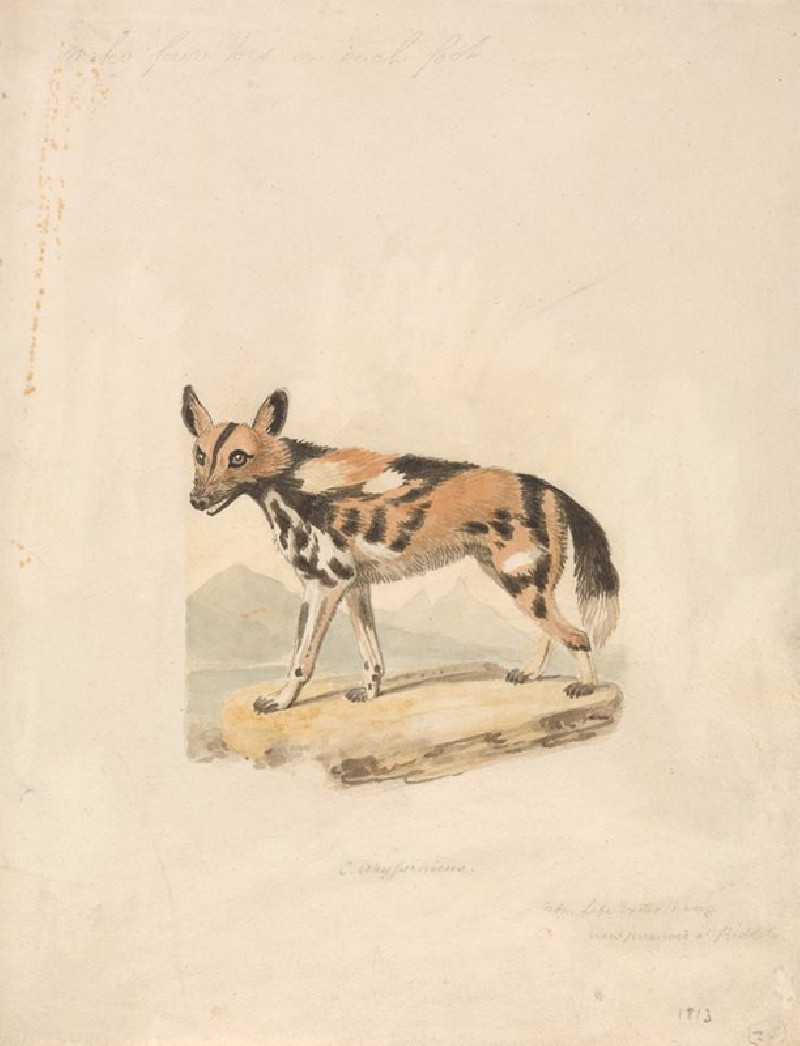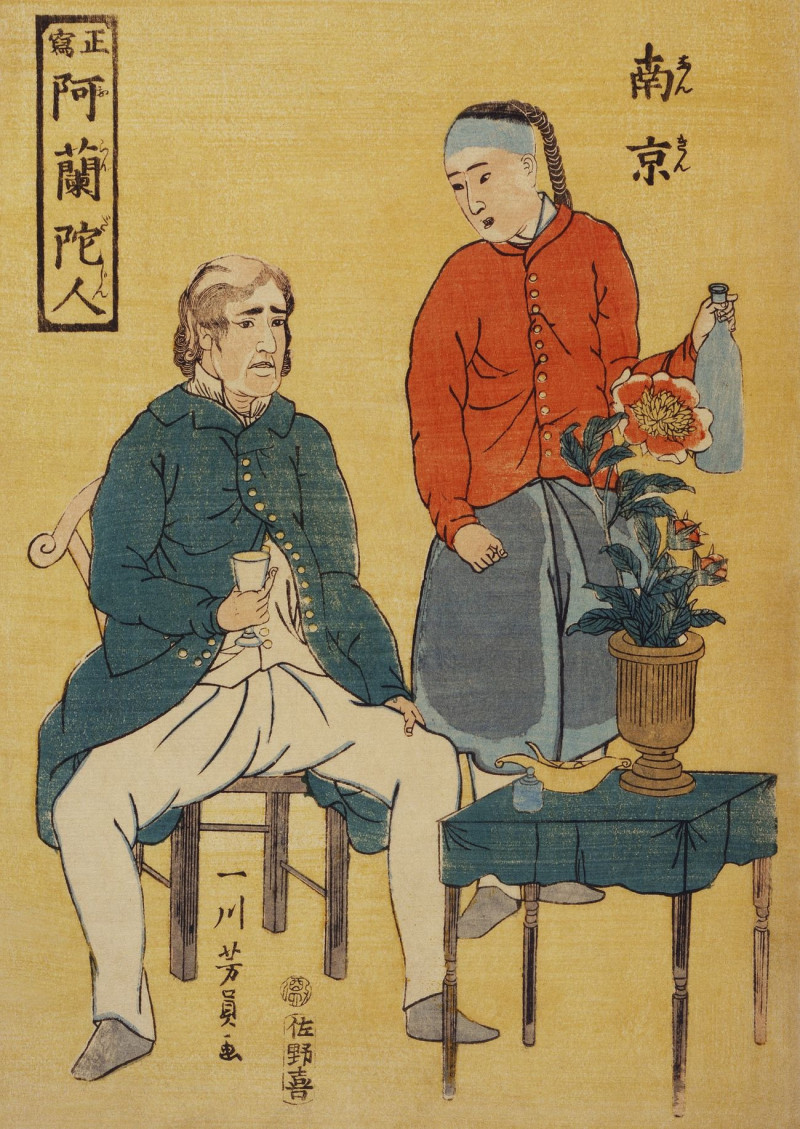A Night in May (1895)
Technique: Giclée quality print
Recommended by our customers
More about this artwork
Eugène Jansson's "A Night in May" (1895) is a mesmerizing nocturnal landscape that captures the serene and contemplative essence of a late spring evening. This painting portrays an expansive view of a tranquil water body under a vast, subtly illuminated sky. Jansson's masterful use of color and light creates a captivating atmosphere that draws the viewer into a world of peaceful solitude.The water in the foreground reflects the twilight hues of the sky, seamlessly merging blues and dusky oranges that suggest the lingering warmth of a sunset or the cool onset of night. The dark, undefined landforms on the edges of the composition provide a sense of boundaries within the expansive openness of the scene. Small lights, possibly from distant buildings or boats, twinkle like stars, suggesting human presence in this otherwise seemingly untouched natural setting.Jansson, known for his intense and moody cityscapes and landscapes, employs a refined palette and a delicate touch in "A Night in May" to envelope the viewer in the quiet majesty of a Scandinavian spring night.
Delivery
Returns
Eugène Fredrik Jansson (18 March 1862, Stockholm – 15 June 1915, Skara) was a Swedish painter known for his night-time land- and cityscapes dominated by shades of blue. Towards the end of his life, from about 1904, he mainly painted male nudes. The earlier of these phases has caused him to sometimes be referred to as blåmålaren, "the blue-painter".

